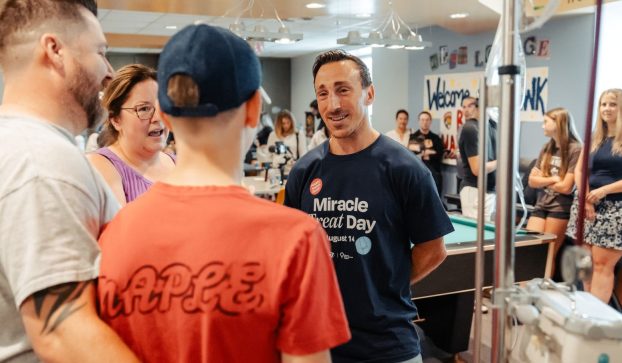It’s lunchtime, you’re ravenous, but the stack of work on your desk is staggering and you don’t have time to linger over a myriad of menu items. You want to make a healthy choice for lunch, because you wouldn’t mind shedding a few pounds, but your office is surrounded by greasy spoon diners and unhealthy haunts. What do you do – scarf down a plate of French fries, or reach for that soy-based energy bar?
If you’re like many of today’s consumers, you may opt for the latter choice. According to an Ipsos-Reid/National Institute of Nutrition study conducted last spring, 53% of Canadians polled said nutrition was extremely important to them. However, 28% of the 2,000 surveyed said they didn’t consider themselves well-informed about nutrition. Now, Health Canada has implemented mandatory nutrition labeling on most foods in order to help us make better food choices.
Taking a cue from society at large, marketers have been tailoring brands, such as Subway, Special K and Slim-Fast, to speak to the health nuts in all of us. But while campaigns for healthy products convey they can be used in conjunction with a weight loss plan, they don’t hammer home the notion of the strict diet regimen.
The latest to come on board south of the border is Snapple, which has developed a meal replacement beverage called Snapple-a-Day – a soy-based fruit smoothie packed with nutrients. Says Sheryl Adkins-Green, SVP of marketing for the White Plains, N.Y.-based Snapple Beverage Group, ‘People have become more and more busy, and while they have the desire to be fit, they might not have time to have a healthy snack.’
Adkins-Green says the beverage is not being marketed distinctly as an aid to dieting. In research, consumers often felt stigmatized if they used meal replacements, particularly if they were not following a weight-loss regimen.
‘Some replacement alternatives are branded as being very focused on weight loss. The positioning [of Snapple-a-Day] is much more contemporary. It fits anybody at any time.’ At this time it isn’t available in Canada.
Meanwhile, Subway has marketed its sandwiches as an alternative to fatty foods for years. The company has focused on its ‘7 under 6’ menu offerings (seven sandwiches with six grams of fat or less) and the tagline, ‘Eat Fresh,’ while nutritional information is posted in its stores and on its Web site.
Its spokesperson, Jared Fogle – a real-life weight-loss success story – has been extremely popular and may be one of the reasons for the company’s continued growth.
Since 1999, sales have more than doubled for the Milford, Conn.-based chain. PR representative Les Winograd says growth has also been a result of improving the quality and freshness of its menus and ingredients.
Similarly, Kellogg has been positioning Special K with the tagline ‘Keep it Simple.’ A recent ad by Toronto’s J. Walter Thompson depicts ladies in a boardroom hovering over a single danish, worried about the calories they should or should not consume.
Pascale LeBlanc, of Toronto’s Youthopia, believes the spot relates to the mind-set of today’s women.
‘If you take care of yourself, you don’t need your palm pilot to calculate every calorie that you put in your mouth. With Special K, it’s more of a ‘baby steps’ mentality rather than the extreme measure to look like a cookie cutter image.’
The brand has also been providing consumers with a mail-in offer to join the ‘Keep it Simple’ program – which is promoted on Kellogg’s cereal boxes and on its Web site. Consumers can order Keep it Simple journals in which they can log their short and long-term health goals – even those as simple as drinking more water or eating more vegetables. The journals also feature healthy recipes and tips for keeping active.
Johanne Trudeau, associate director, nutrition marketing and advertising compliance at Kellogg’s, says it’s too soon to tell how many have joined the program. She says the message is, ‘The shape you’re in is more important than the shape you are.’
So which brands measure up most? We asked people in the know to share their thoughts on the players’ various marketing strategies.
Kelly Frances, sales and marketing manager, Strategies International, Toronto
Health Canada recently put out revised regulations regarding nutrition labeling and what they’ve done is standardized what [manufacturers] can say on their packaging [see The Legal File, p.10]. Because there are detailed guidelines in place, if manufacturers were not including a nutrition facts panel, they really should be now.
Kellogg is taking advantage of that in a good way – they’re really making consumers aware of the health benefits of [Special K] with the whole ‘Keep it Simple’ solution.
The thing I noticed about Slim-Fast – they’re really emphasizing the taste-sensation aspect. The packaging is a little bit more inviting in terms of the way it looks and they’ve got a whole range of flavours [like chocolate cookie dough]. So, if you’re on a diet and you get to eat a little bit of chocolate cookie dough, who can complain about that? [But], if you’re not following that plan to the ‘T,’ then there’s a possibility that you might not have the ultimate effect that you want to have. [However], Slim-Fast has demonstrated the taste profile with the fact that it’s enjoyable and you’re not going to be eating cardboard.
Pascale LeBlanc, youth marketing expert, Youthopia, Toronto
Subway wants to become a nutritional institution, just like Special K. They have succeeded in offering a product that is relevant to today’s lifestyle. People on the run can take 15 minutes and have a healthy sandwich instead of a burger.
They have really educated the audience in a smart way and it was done slowly but surely. People had time to recognize and digest the information and adapt to the new products. It was not shoved down their throats to change their lifestyle.
It’s almost like Subway is doing social marketing. They went from informing the consumer to trying to influence them and encourage them to change their behaviour and eating habits. It was about focusing on the product, but also focusing on the consumer to have a healthier lifestyle. Subway has realized and understood the public’s attitude in social trends and done its homework about the concerns of its audience. [The company] doesn’t only want people to buy sandwiches, it also tries to build a long-term relationship with them.
Alvin Wasserman, president, Wasserman and Partners, Vancouver
The big word is respect – advertisers can’t think any less of a woman because there’s more of her. When I look at who is doing it well, the philosophy that works is the focus on feeling good rather than looking good. I would call it coupling – if you couple concerns along with your weight loss message, I think it works.
I think where people try to do it straight across (i.e. the product equals weight loss) they run the risk of heading into foul territory. Becel, for instance, has a sort of healthy eating plus appreciating life equals weight loss.
Special K over the years has done a great job, especially early Special K [where the guy talks about his mother’s thighs]. Women loved it. That sense of being obsessed with your body really rang true with them. [The current stuff] seems to be a little too catty right now.
[Subway has been] very successful because they’ve married healthy eating plus taste equals weight loss and they’ve wrapped it around the wonderful gift of Jared that everybody can relate to. The ‘guy next door’ worked on his diet and he made it and now it’s the continuing saga as he progresses in his life. It’s like a soap opera, you want to see what’s next: what happens when he gets kids – are they going to be chubby? They’ve been at it for five years and there’s a long story there.























